Affiliate links on Android Authority may earn us a commission. Learn more.
From OnePlus 6T to OnePlus One: A week with a 5-year-old phone
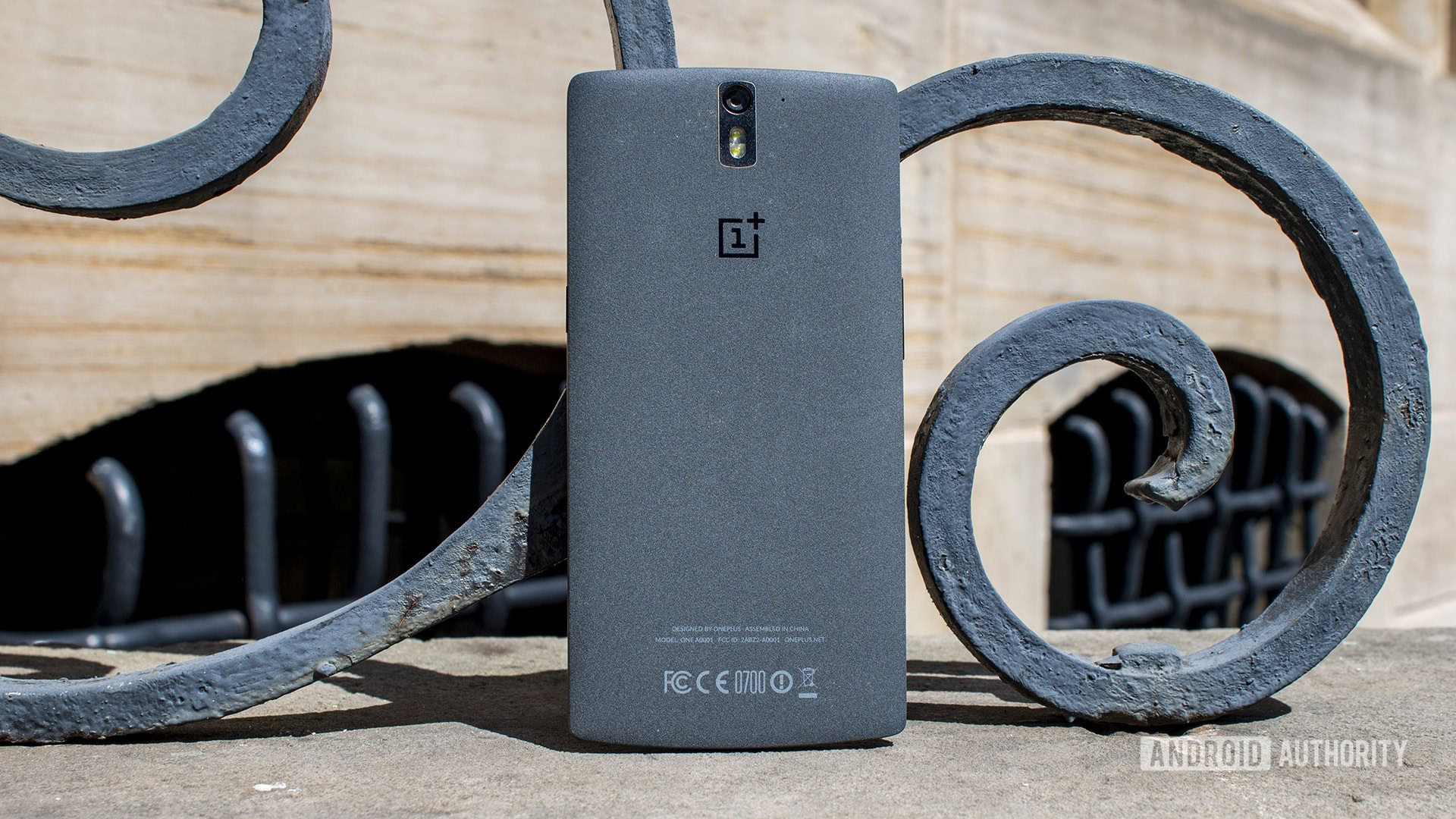
Today is April 23, 2019, the fifth anniversary of the launch of the OnePlus One, the first smartphone from the Chinese company.
A month or so after that launch in 2014, I received an invite from a stranger on Reddit to buy the device. At that time, OnePlus was an unknown brand releasing an unconventional smartphone in an unconventional way.
Without any hyperbole, using the OnePlus One fundamentally changed how I viewed owning a smartphone. For the first time ever, I felt like I was holding a phone that was made for me, as if OnePlus called me up and asked me what a perfect smartphone would look like, feel like, and — most importantly — cost.
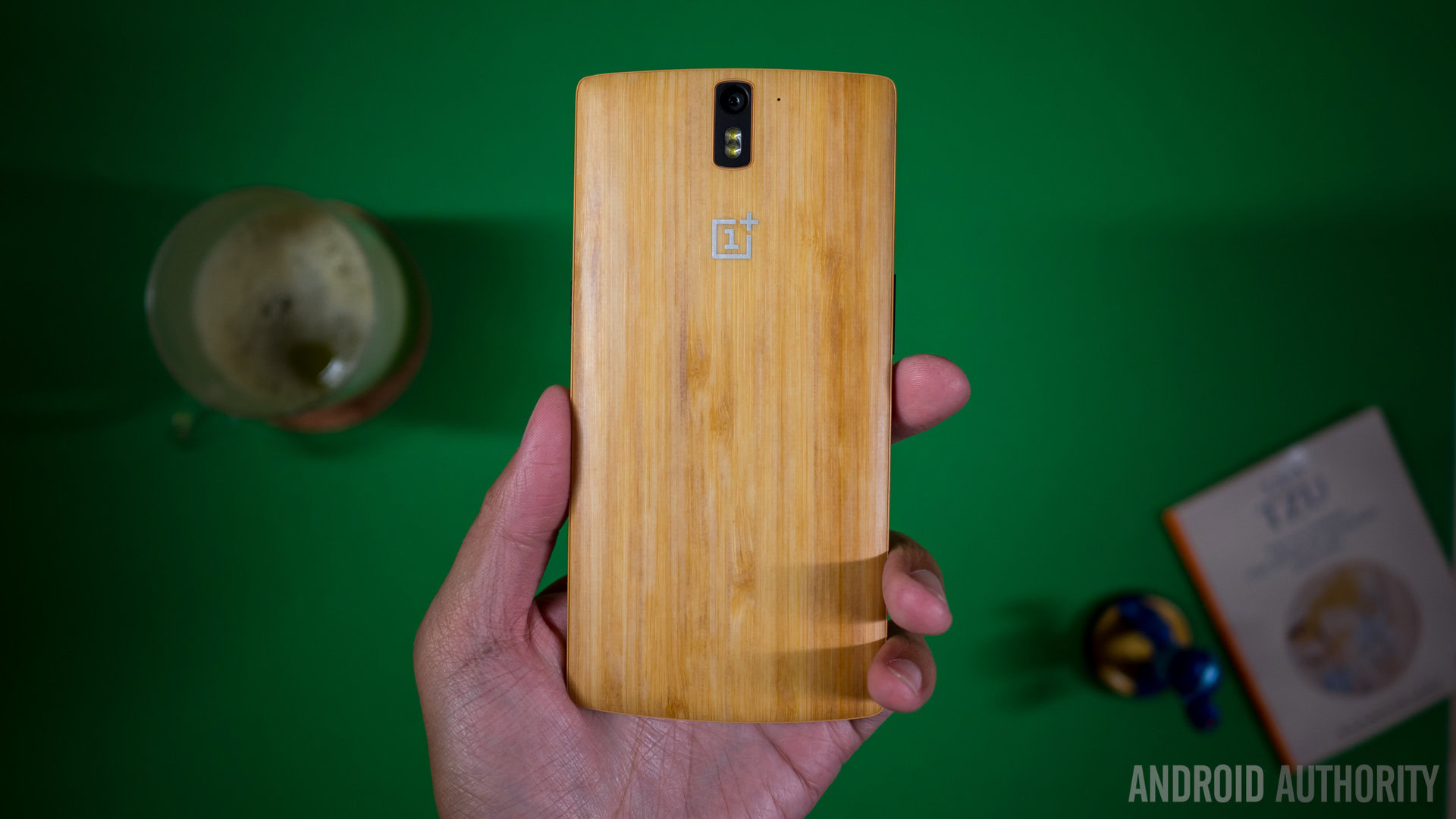
Since then, OnePlus has become a powerhouse global brand with a string of smartphones (and a handful of other products) each earning rave reviews and selling better than the previous iterations. In that time, much has changed for the company and the industry as a whole.
The OnePlus One may have started it all, but there’s no way it could hold up to a newer flagship. Or maybe it could? I figured there was only one way to find out, so I put my OnePlus 6T into a drawer and used a OnePlus One as my exclusive daily driver for a solid week.
During my time with the One, I came to a few realizations about older smartphones, past versions of Android, and how far technology has progressed. Below you’ll find my breakdown of those discoveries over the week.
I’ll spoil the ending for you ahead of time: I was beyond excited to take my OnePlus 6T out of the drawer.
OnePlus One: The rules and the setup
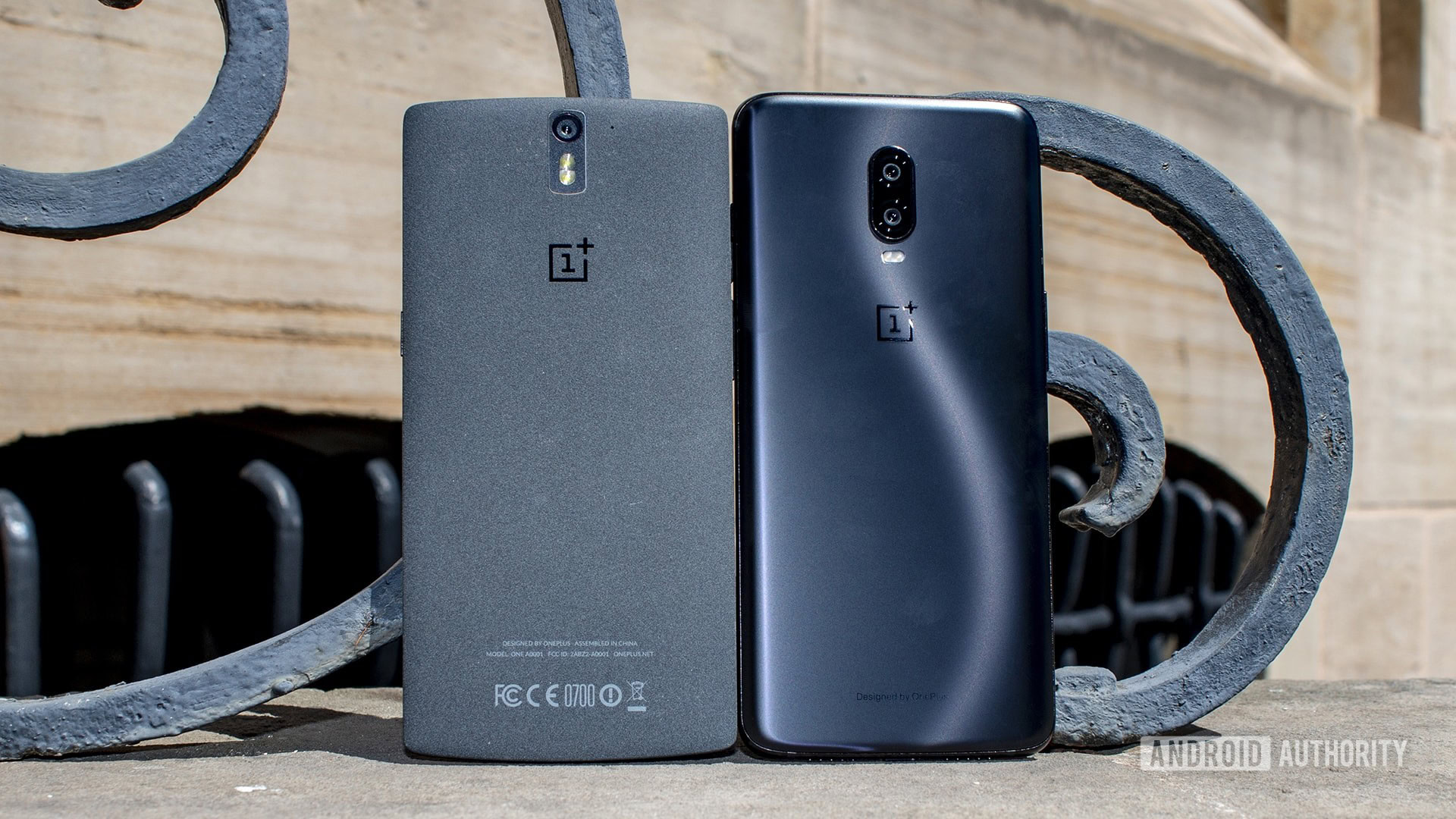
If you read my previous “one week experiment with a different phone” piece in which I used an iPhone 8 Plus, you’ll know I take this gimmick pretty seriously. For that iPhone article, I didn’t allow myself to even touch my usual smartphone (at that point a OnePlus 5) and was pretty strict about how I approached the features and limitations of the Apple ecosystem.
For my week with the OnePlus One, I came at things in the same way, although since the One is also an Android phone it was a bit less limiting.
Here are the rules I made for myself:
- I could only use the most recent official software update for the OnePlus One, which is OxygenOS v2.1.4, released on October 9, 2016, based on Android 5.x Lollipop. No rooting, custom ROMs, or other non-official software tweaks (Magisk, etc.).
- Although I could certainly do some basic troubleshooting for any issues I came across, I wouldn’t delve too deep into fixing problems. I chose this because I wanted to use the phone as if I was someone who doesn’t know all about fixing smartphone issues (i.e. the average smartphone user).
- If the OnePlus One couldn’t do something, then I would not fall back to another device to do whatever that might be.
Before I even started the week I ran into a pretty significant issue: the OnePlus One uses the older Micro SIM card format, not the Nano SIM cards used by nearly every smartphone today. Luckily, a quick trip to T-Mobile fixed that up with the clerk handing over an adapter totally free of charge (T-Mobile customer service really is something else).
I entered the week optimistically. After all, this was once my favorite smartphone.
I also had to spend about an hour getting the software on the device ready for the modern day. For example, the Google+ app was still on the phone (RIP) and Android Pay came pre-installed (not the more current Google Pay). After updating all of the pre-installed apps (which took way longer than expected) I had to install all the apps I would need to go about my every day, some of which simply wouldn’t install on a device based on Lollipop. This was inconvenient, but all the truly essential apps I needed worked.
In spite of these issues, once I was all set up and good to go I entered the week optimistically. After all, this was once my favorite smartphone.
OnePlus One: Things that were great
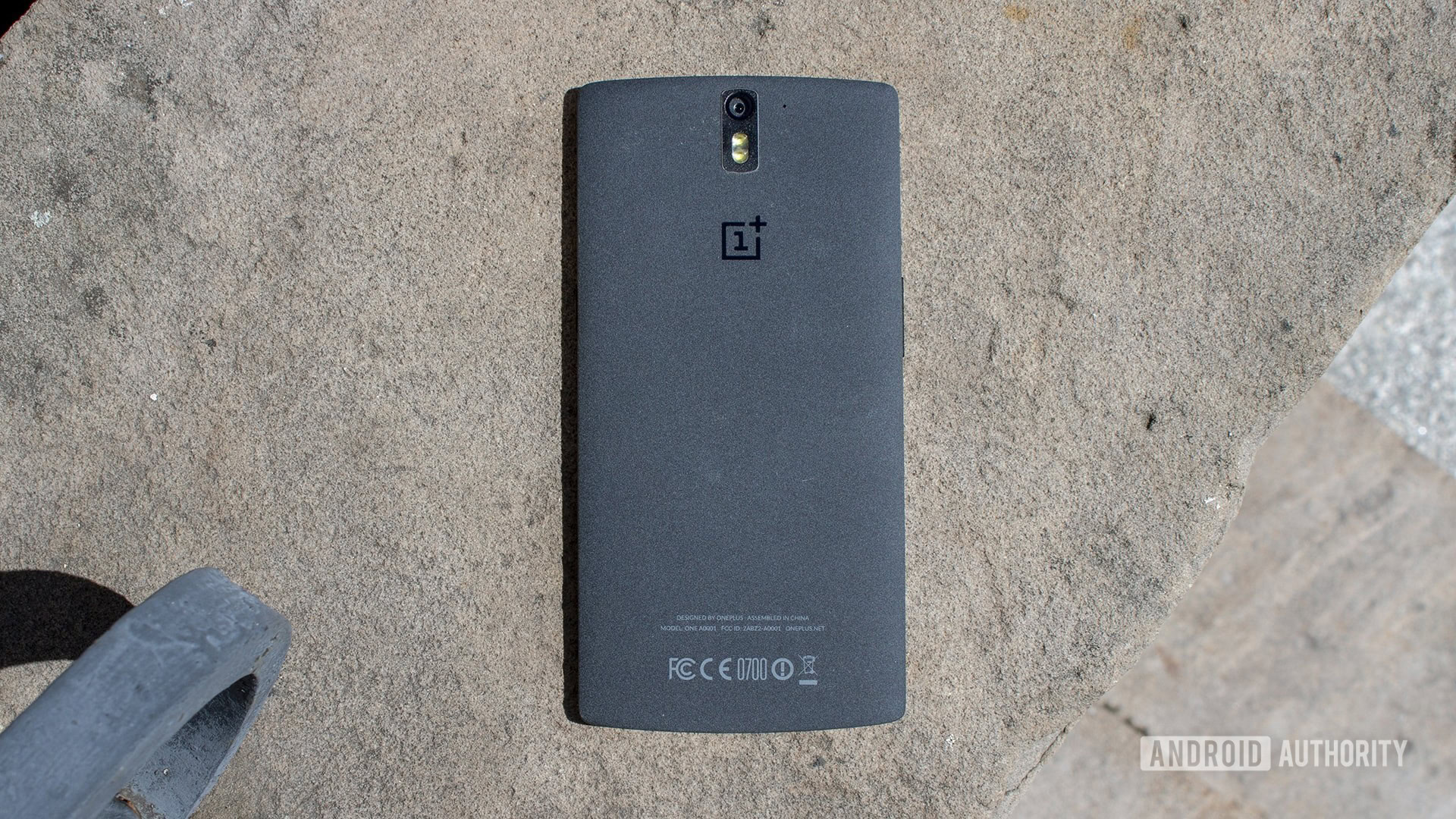
The first thing I thought to myself when I held the OnePlus One in my hand for the first time in about 4 years was, “Man, I love this sandstone back.” Every OnePlus device I’ve owned since the company did away with the sandstone back hasn’t felt as good. I always buy a sandstone case to wrap around my phone (including the OnePlus 6T), but it’s just not the same.
Even aside from the back texture, the OnePlus One still looks and feels like a great phone. It’s not too heavy, nor too light, and fits great in my hand. The squared-off edges might seem less premium as compared to the very curvy smartphones of today, but I actually really liked it.
The display of the One is obviously much smaller than the one on my 6T, but I actually found that to be a bit of a benefit. It’s been a very long time since I could operate my smartphone completely one-handed regardless of what I’m trying to do, and that was refreshing.
Even after all these years, the OnePlus One is still a looker.
I did miss the OnePlus navigation gestures introduced with later versions of OxygenOS (still the best Android gestures I’ve ever used) but I was surprised how quickly I re-adapted to using hardware keys rather than on-screen navigation. Within a few hours of using the One, I felt right at home.
Check out the gallery of images below showing how the OnePlus One compares in design to the OnePlus 6T:
Despite Lollipop being close to five years old, performing most fundamental tasks with the OnePlus One worked just fine. Phone calls, text messages, web browsing, hotspot tethering, and other similar functions all worked without a hitch. I even had no problem connecting my 2018 smartwatch (the Fossil Sport, running the latest version of Wear OS) to the One with no perceived loss of usability.
Even Google Assistant worked well on the One. I used Assistant voice commands several times to get directions via Google Maps and things went exactly as planned.
I saw no loss of data speed connections, either. I performed several speed tests both on mobile and on various Wi-Fi connections and saw similar speeds as I have on my OnePlus 6T.
It was also nice having the notification light back. The OnePlus 6 is probably going to be the last smartphone from the company with the popular feature, and I didn’t realize how much I missed it until I had it back again. Surprisingly, though, I didn’t much notice that the headphone jack was back — I just used my Bluetooth headphones anyway and there was no occasion during the week where a wired connection was necessary.
Overall, for pretty much every core function one needs a smartphone for, the OnePlus One did the trick.
Outside of those core elements is where the OnePlus One starts to struggle.
OnePlus One: Things that were bad
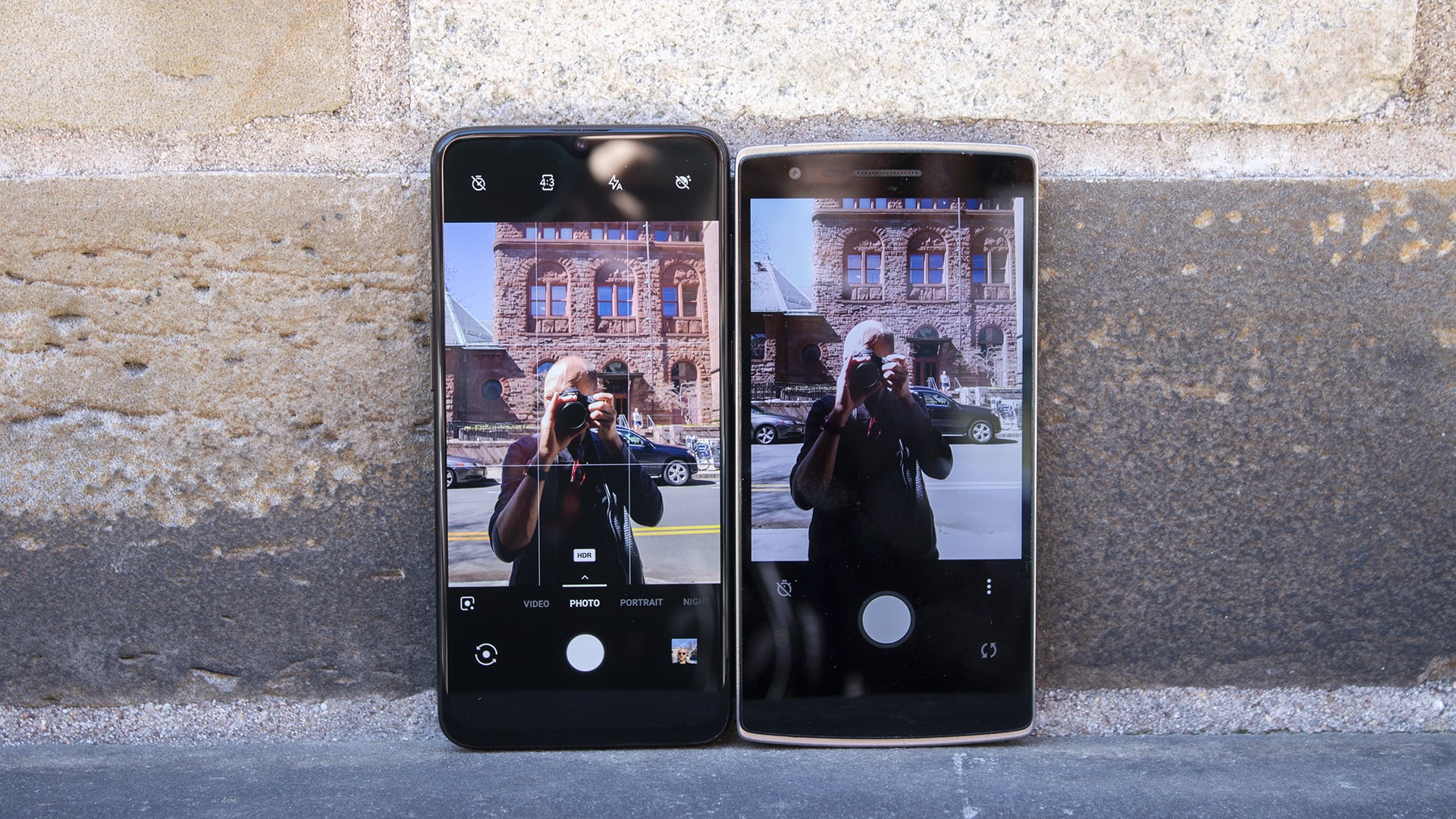
Unfortunately, there is a lot to complain about when it comes to using an old smartphone paired with an old operating system. I am not going to go over every little complaint I had or problem I faced because this article would get very long and tedious. Instead, I’m going to discuss the four biggest issues I faced during my week with the OnePlus One, all of which combined make it very difficult to imagine using an older device as a daily driver for an extended period of time.
Power and battery life
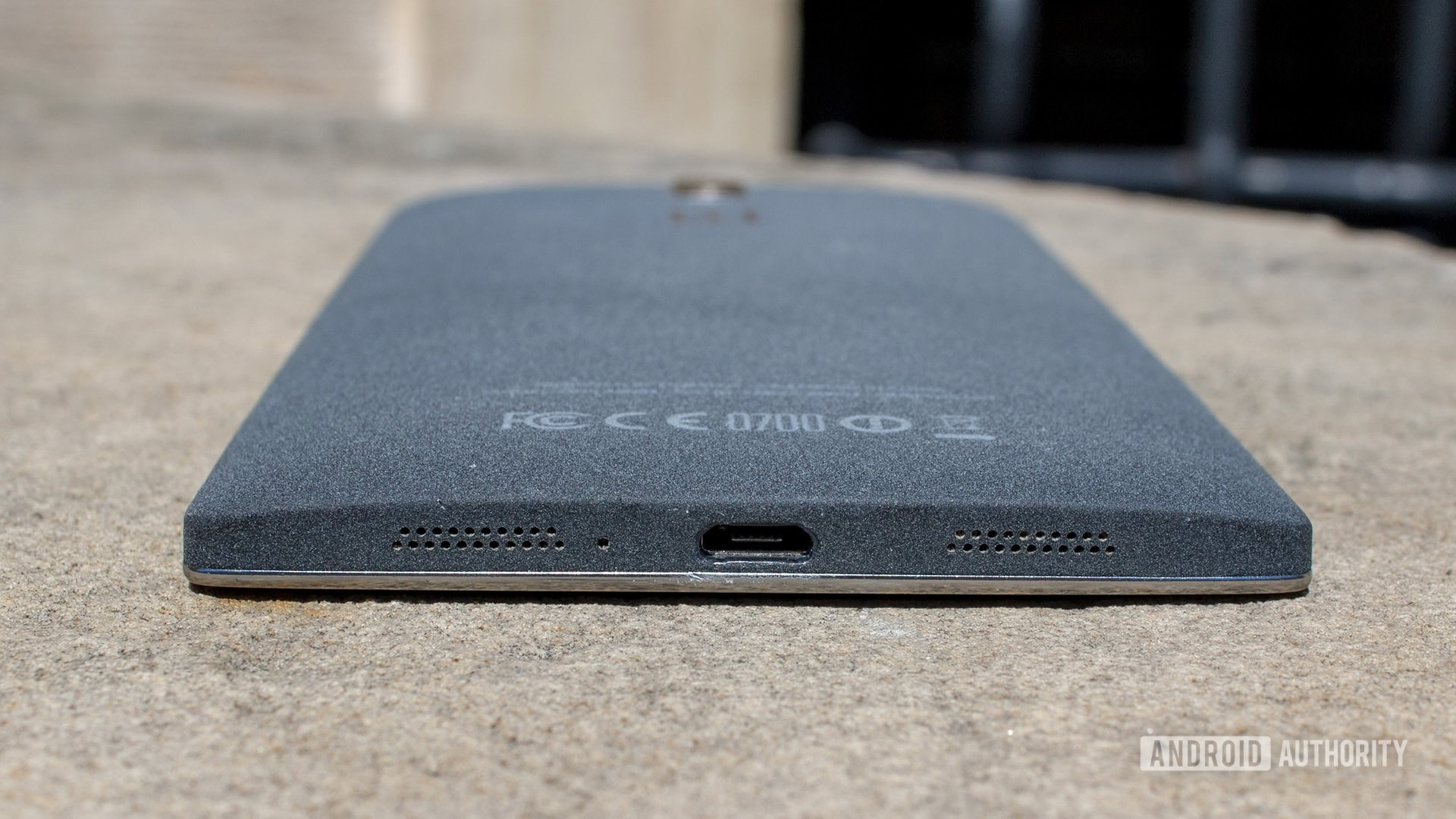
The OnePlus One and the OnePlus X are the only two smartphones from the company to feature a Micro USB charging port — all other devices feature the faster, more advanced USB-C. It’s been years since I’ve had any use for a Micro USB charger in a smartphone and I forgot just how incredibly slow this format really is.
Charging the OnePlus One took so, so long. My OnePlus 6T can charge from zero to 65 percent in a little over 30 minutes — I estimate it would take four or possibly five times as long for the One to do the same.
If the One lasted as long on a charge as the OnePlus 6T, this wouldn’t be too big of a problem, as I only charge my 6T at night when I go to bed (usually with more than 50 percent battery left to go). However, the 3,100mAh battery in the One doesn’t last nearly as long. In fact, it drains at an alarmingly fast pace.
I don't know what was worse: how fast the battery drained or how slow it was to recharge.
I was working remotely and using the One as a hotspot as well as streaming my Plex music collection through my Bluetooth headphones. While this would be a battery-draining activity on any smartphone, it was particularly taxing for the One: It lost 50 percent of its battery power in about two hours.
Normally, doing the same activities for the same amount of time on my 6T would drain about 15 percent of the battery.
In order to avoid the phone dying on me before the end of the day, I had to charge the One, which of course was a slog. There’s no way I could live with these limitations for very long, especially being a writer who works from trains, coffee shops, airports, etc. on a fairly regular basis.
Slow processing speed
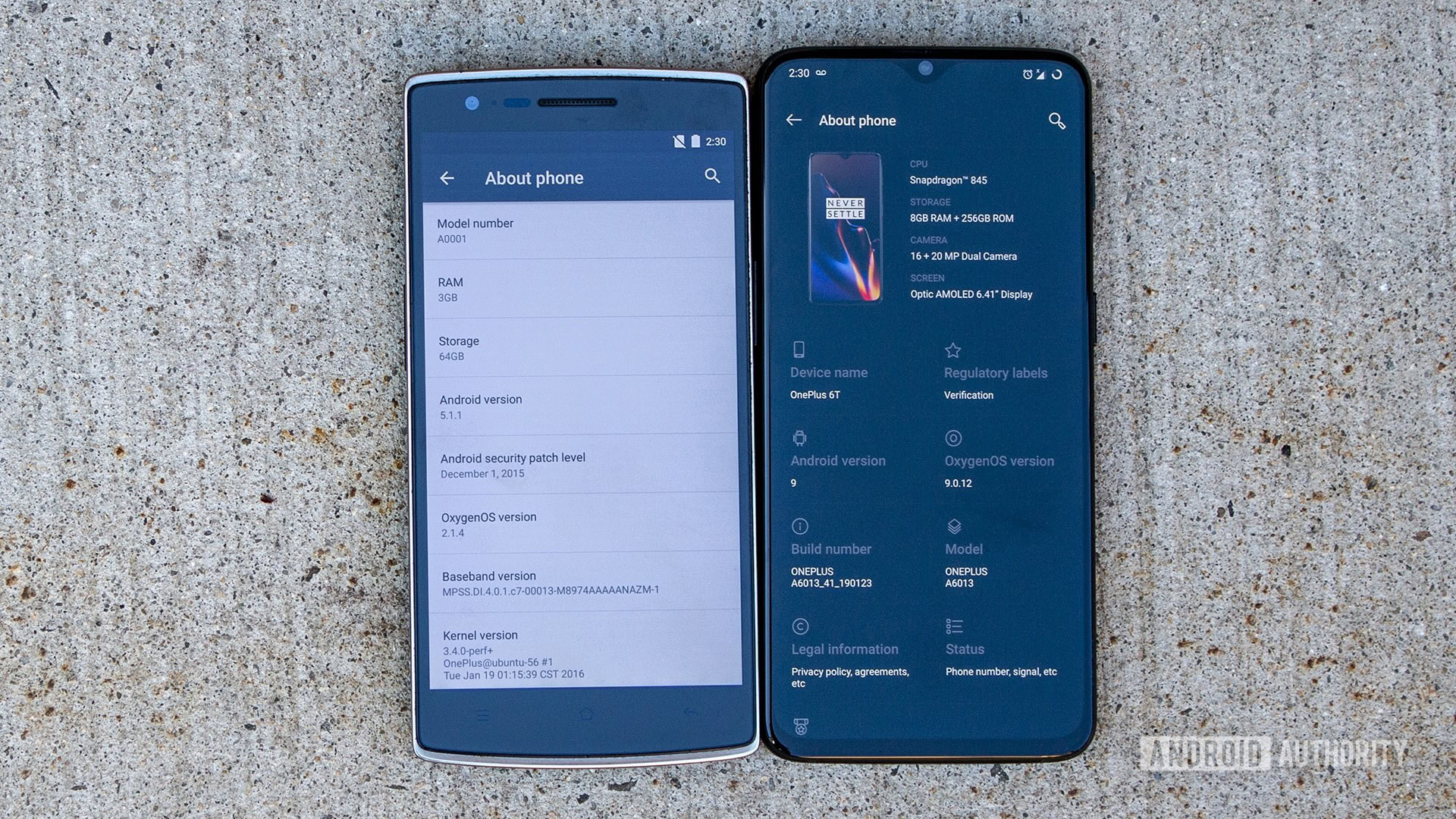
The Qualcomm Snapdragon 801 in the OnePlus One was top-of-the-line at the time of its release, but now it is an old timer. Compared to the Snapdragon 845 in my OnePlus 6T, it’s an ancient relic in many ways.
No matter what I was doing on the One, it was slow. Response times for touches were definitely milliseconds slower than I’m used to; opening apps took seconds longer than usual; transition animations were erratic; even starting up the phone took so much longer than modern phones, close to a full minute.
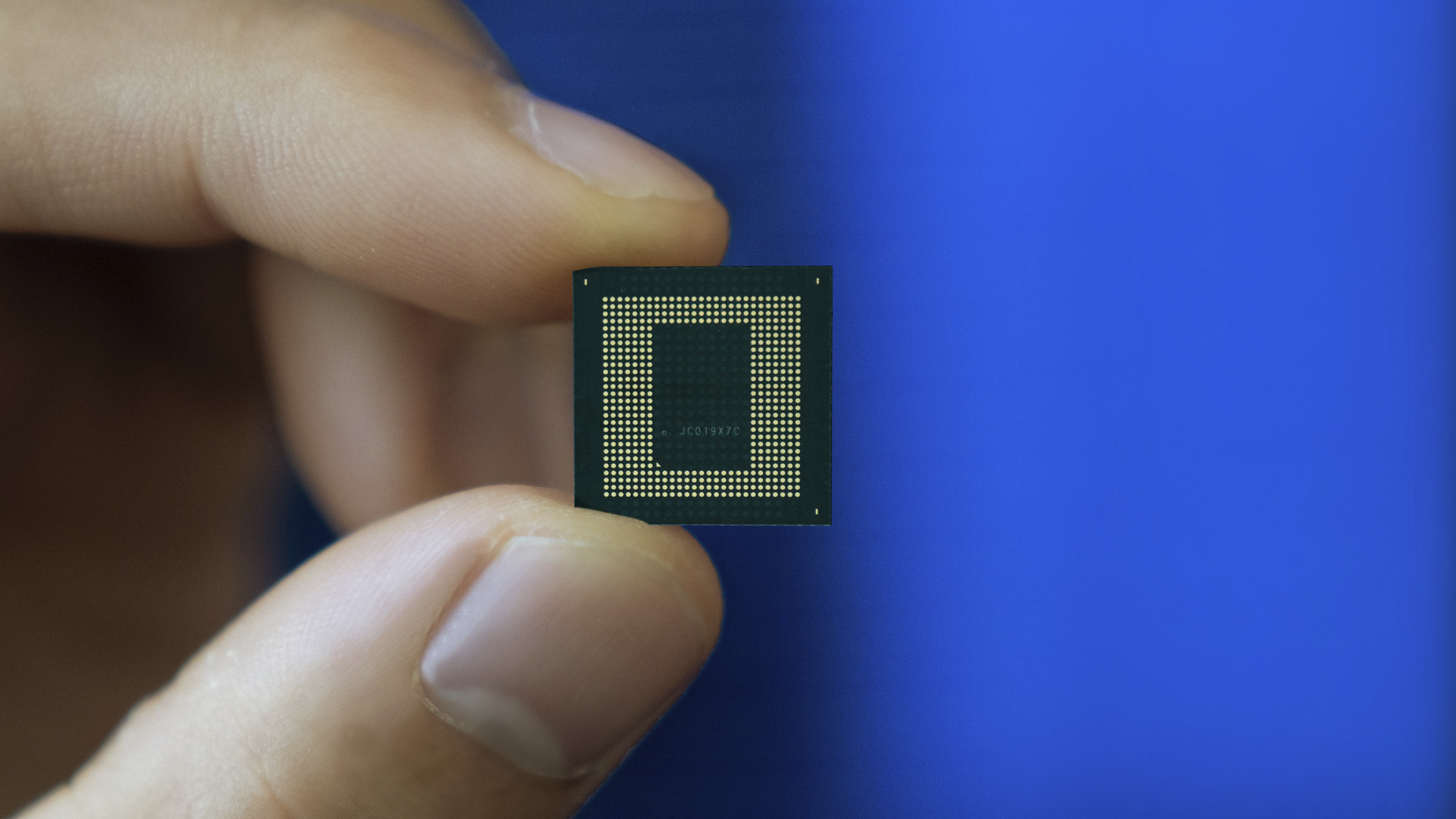
In 2014, the One seemed downright blazing to me (and most review sites, such as Android Authority, which called its performance “top of the line” and “a breeze”). Now, it feels like you play a little waiting game before every action.
This just goes to show that you might not notice much of a difference between this year’s processor and last year’s, but you certainly notice when you go back a few more generations.
Lack of a fingerprint sensor
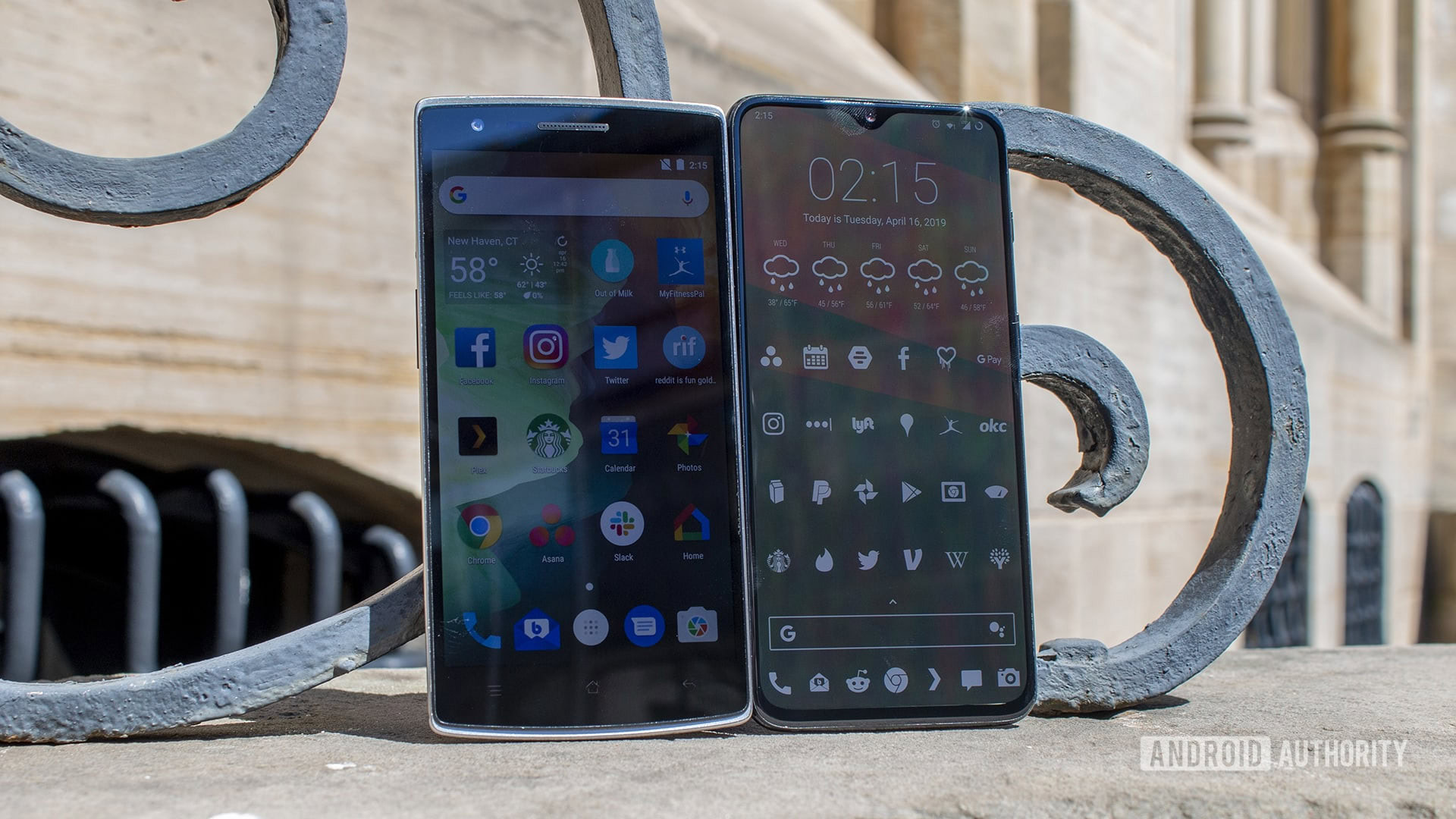
It’s been so long since I’ve used a phone without a fingerprint sensor that I’d forgotten how much this one feature completely changed smartphones.
I use LastPass to log in to pretty much every app, email account, social media network, etc. Every single time I had to log in to a new app, I had to enter my master password for LastPass, whereas on every phone I’ve owned for the past four years, all I’ve had to do is touch the fingerprint sensor. This was absolutely infuriating.
You don't know how much you use the fingerprint sensor until you no longer have one.
Even after I got the phone all set up, I still had to enter my LastPass master password multiple times a day. Logging into my banking app? Password. Logging into PayPal? Password. Purchasing an app? Password.
I’ve often complained on Android Authority about how much I dislike fingerprint sensors on the backs of devices. I take it all back. After a week with the OnePlus One, I’ll take a fingerprint sensor anywhere — as long as there is one.
Poor camera
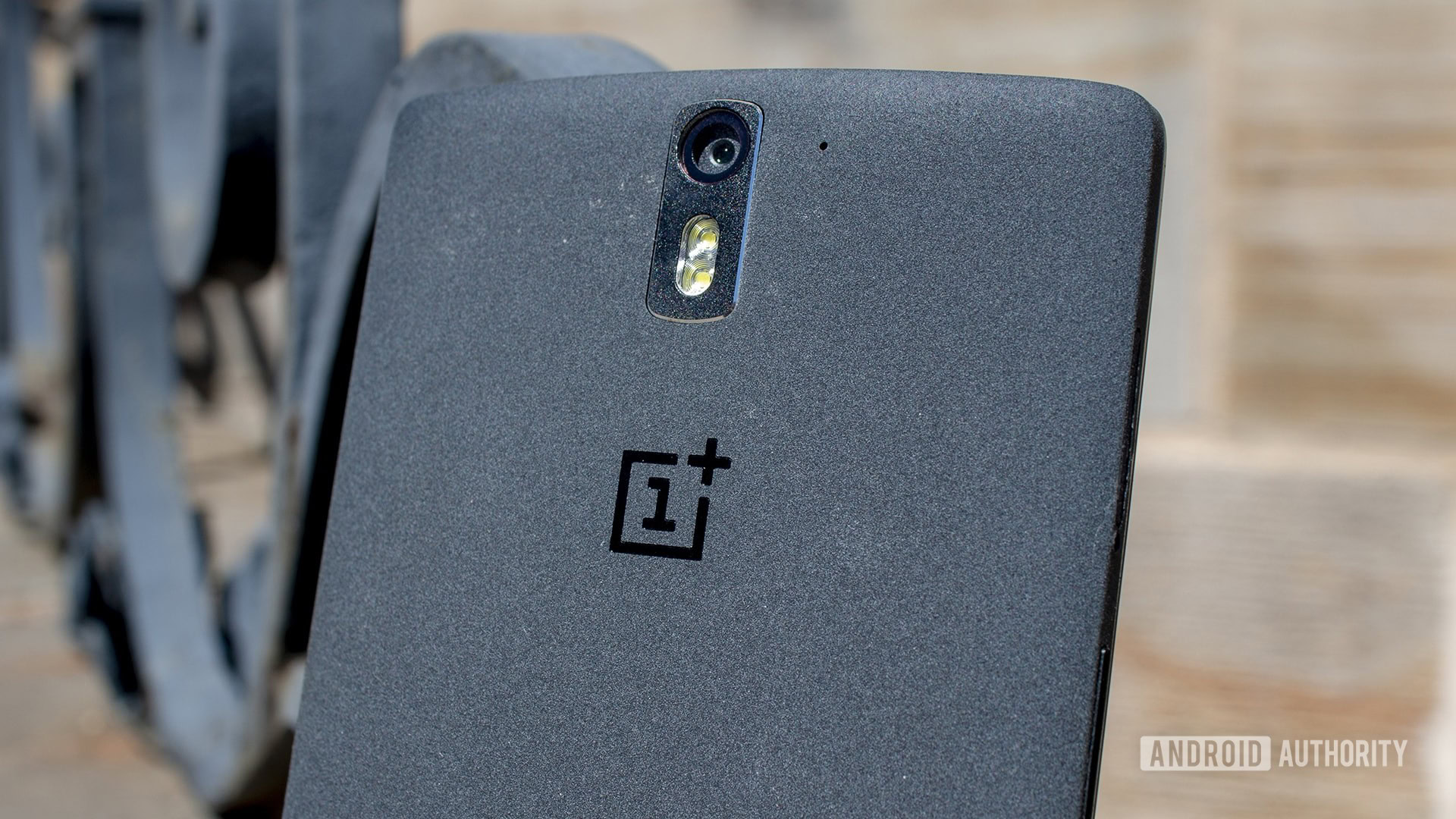
If there’s one aspect of a smartphone that’s taken the front seat over the past few years, it’s the camera. Between the Google Pixel 3 and its AI-powered camera tricks to the HUAWEI P30 Pro with its periscope zoom and RYB sensor, the most forward-thinking innovations in smartphones these days seem to revolve around taking pictures.
The OnePlus One doesn’t measure up at all to the cameras of today.
Myself, I’m not even a big photo taker. I take the occasional selfie with my girlfriend when we’re doing something I think people might be interested in, or snap some photos of my friends if something special is happening. Even though I’m a total novice when it comes to pictures, even I could notice just how horrible the camera is on the OnePlus One.
There's no way around it: the OnePlus One camera is simply terrible compared to modern standards.
A picture is worth a thousand words, so here are some example shots. The first shot of each pair is from the OnePlus One and the second is from the OnePlus 6T. These photos haven’t been edited in any way, other than cropping. I also didn’t do anything special with each shot, just pointed both phones at the subject and hit the shutter button.
The cameras on OnePlus devices are usually dinged for not being up to par as compared to modern competition. The photoset above might just fuel the haters’ fire in that regard, but let’s be honest: those are some really bad pictures from the OnePlus One.
Thankfully, the shots from the OnePlus 6T are much better.
OnePlus One: The bottom line
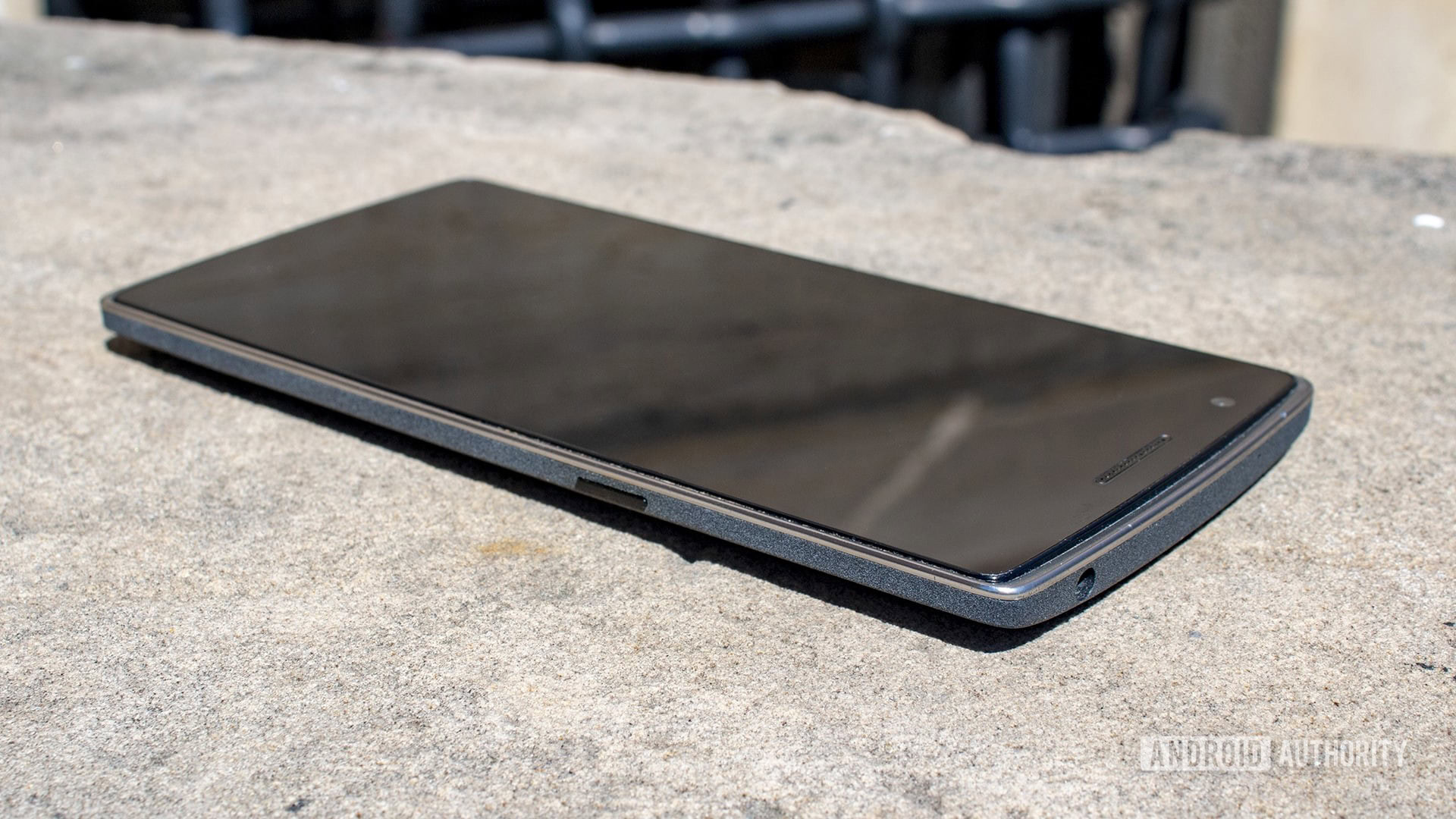
I know for a fact that there are still plenty of people out there rocking a OnePlus One who likely are heading to the comments of this article ready to post their thoughts on how the device works just fine for them. I also know there are people ready to point out that if I simply upgraded from the official Lollipop software to a custom ROM, things would be smoother and faster on the device and all of my apps would have worked (there are Android 9 Pie ROMs available for the One).
After using the device for a week, you just can’t convince me. A custom ROM isn’t going to add a fingerprint sensor, bring the camera up to modern standards, add a USB-C port, or fix any of the other hardware deficiencies present on the OnePlus One.
The OnePlus One was a terrific phone in its day. Today, though, it can't keep up.
At this point, the OnePlus One is the kind of device I would keep as a backup — something familiar and simple to use if something on my main phone goes wrong. Even then, though, I have a OnePlus 5 that could fulfill that role just fine, and it has dual cameras, a fingerprint sensor, and an official Android 9 Pie update.
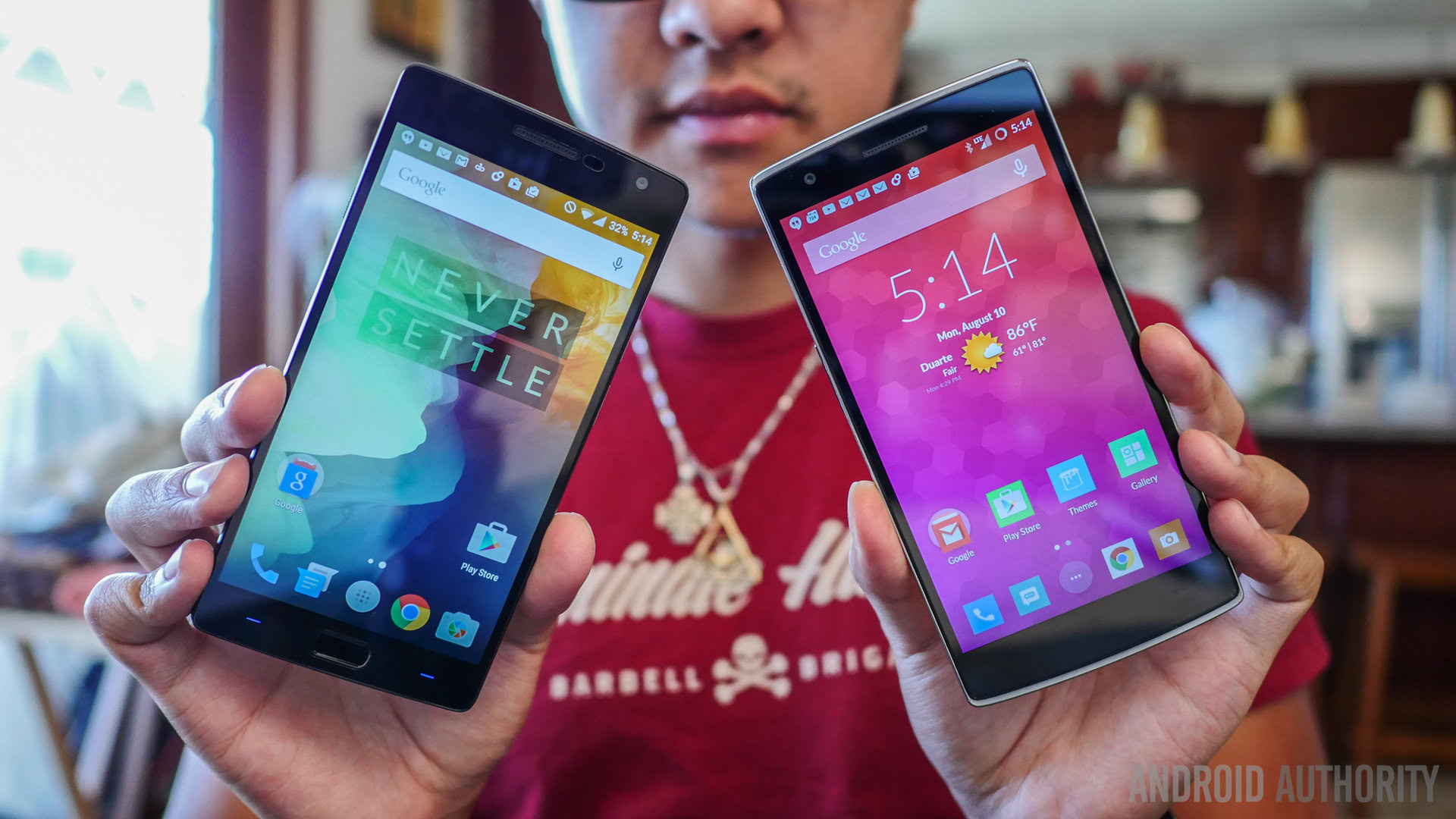
Five years is a long time in the technology world, and by using the One for a week, I was reminded just how far things have come. As I mentioned earlier in the article, you don’t really notice changes too much with iterative updates; a jump from the Snapdragon 835 to the 845 won’t feel like a drastic upgrade. Go back to using the Snapdragon 801 — or a five-year-old camera, or an old display, or a Micro USB port – and you’ll see just how far we’ve come.
That all being said, I have nothing but respect for the One. It really was my favorite phone when it came out and holding it in my hand again reminded me of how great it was when it launched. The device hasn’t aged like a Super Nintendo game, a classic car, or a fine wine. It’s aged like a VCR.